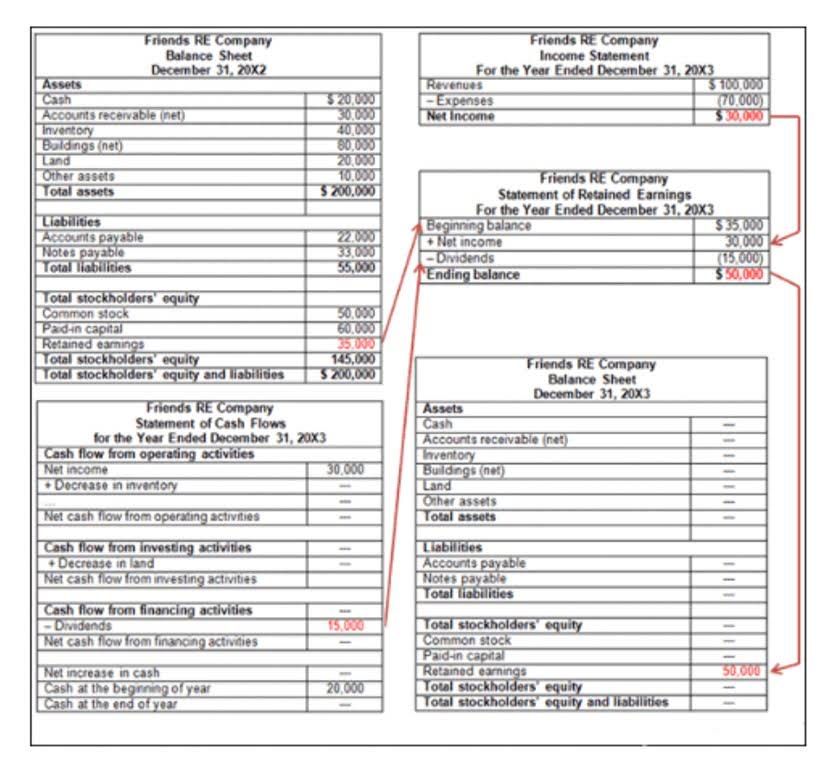Archiv autora: Tomáš Polák
MB-330: How to Define Configuration Routes in Microsoft Dynamics 365 for Consistent Product Management?
The configuration route establishes the sequence of the configuration groups, as they will be displayed to the user during the product configuration process. Define a configuration route that establishes the sequence of the configuration groups.C. Define configuration routes directly in the ‘Product variant model definition’ workspace.D.
Word History
- Define a configuration route that establishes the sequence of the configuration groups.C.
- Define configuration routes in the ‘Released product maintenance’ workspace.
- Help support Wordnik (and make this page ad-free) by adopting the word consistency.
- B. Define a configuration route that establishes the sequence of the configuration groups.
„I got whacked over the head yesterday trying to get into my car… it was getting to the consistency meaning stage where it was attacking people with consistency.“
- Define configuration routes in the ‘Released product maintenance’ workspace.
- B. Define a configuration route that establishes the sequence of the configuration groups.
- Help support Wordnik (and make this page ad-free) by adopting the word consistency.
- Define configuration routes directly in the ‘Product variant model definition’ workspace.D.
Are you a words master?
Define configuration routes in the ‘Released product maintenance’ workspace. B. Define a configuration route that establishes the sequence of the configuration groups. Help support Wordnik (and make this page ad-free) by adopting the word consistency.
New Post
Neww
What Important Information Is Available on a Pay Stub?

Payroll taxes and other deductions (we’ll get to those later) reduce the employee’s earnings. The pay stub itemizes taxes so that employees can see all the tax amounts withheld from their gross pay. Employees usually get their payslips from their employer at the end of each pay period, either as a printed document or electronically through email or an online portal. Many businesses use payroll software or apps, allowing employees to view and download their payslips. Some employees review these amounts to make sure they are on track with their financial goals. pay stubs meaning If someone notices that too much is withheld for tax, they might adjust their filings or allowances.

Explaining How to Read a Pay Stub to Your Employees
This isn’t just your base pay; it encompasses all facets of your compensation. It’s generally good practice for employees to save pay statements for at least one year. By doing so, they can verify the accounting accuracy of their annual Form W-2, Wage and Tax Statement when preparing their individual income tax returns. Employers usually provide pay statements because it’s required by a state or local jurisdiction. These states ensure that employees not only have the right to access their pay information but also receive a formal pay stub as a standard practice. But the utility of YTD goes beyond personal financial planning.
Common Mistakes Creating Pay Stubs
- Because It’s vital for your financial health and legal rights.
- The Social Security fund provides benefits to current Social Security recipients.
- Paycheck stubs are an essential component of the payroll process in any business.
- Moreover, a clear understanding of your tax deductions can also provide deeper insights into your net income, allowing you to gauge how much you’re actually taking home after taxes.
- The check number is a unique identifier located at the top right section or on the bottom right of the check, typically right after the routing number.
Consistently track overall income and expenses and regularly reconcile these records with paystubs to ensure a clear financial picture and accuracy with tax reporting. Implement a system (manual logs, apps, or project management software) to record work hours or billable time per project. Maintain organized records of all payments, clearly associating income with specific projects or clients. Just like gross wages, information on deductions should be included for both the individual pay period and year-to-date. Any adjustments — such as retroactive pay or deductions for overpayment — made to the employee’s wages for the pay period should be revealed on the pay stub. Regular reviews of each pay stub can help spot errors early.

Health Savings Accounts

When you start a new job or want to change the amount of tax that is withheld from your paycheck, you will need to fill out a W-4 Form. This will tell your employer how much money to deduct from your check for taxes and benefit contributions. Pay stubs include the details of each pay period’s wages including the following, depending on your personal circumstances. As you delve deeper into the pay stub, Retail Accounting your attention is drawn to the pulsating heart of this financial document—the “Gross Wages” section. Here, in bold and unambiguous figures, lies the sum total of your earnings for the designated pay period.
- Secondly, ‘Per Pay’ can give you insight into whether your paycheck reflects the correct pay rate and hours worked for the pay period.
- As an employer, understanding pay stubs is crucial in managing your business effectively.
- It acts as a record and proof of payment for both the employee and employer.
- Her work has been featured on US News and World Report, Business.com and Fit Small Business.
- Sasha is an experienced writer and editor with over eight years in the industry.
Any errors in your deductions are your responsibility to report. The last thing you want is for an error to be repeated through several pay periods. If you have questions about any of the information listed on your pay stub, be sure to contact your payroll provider. The federal government requires every working American to contribute a portion of their paycheck to Social Security, a system of supplemental retirement programs established in 1935.
This step involves entering the specifics of the employee’s earnings. Paystubsnow’s templates will have sections for regular income, overtime, bonuses, and other payments. You’ll need to input the pay rates and hours worked, along with any other payment to the employee.

As an employer, you can reduce that stress by making it easy for employees to access the necessary documents. In this guide, we’ve unveiled the essential components of a pay stub and answered the question, ‘Shat important information is available on a pay stub? Your typical pay stub is more than just numbers; it’s a financial roadmap, encompassing everything from gross wages to taxes, deductions, and net pay. Pay statements contain personal information that could be subject to identity theft. It’s important to retain them in a safe place and securely dispose of them. Employees who lose pay stubs may want to monitor their credit report and alert their bank and credit reporting agencies so they can flag any suspicious activity.
- Also, many states require that employers supply employees with a pay stub.
- Your typical pay stub is more than just numbers; it’s a financial roadmap, encompassing everything from gross wages to taxes, deductions, and net pay.
- It’s the amount the employee receives when paid, either by direct deposit or a paper check.
- It’s important to know the requirements by state to follow the law.
- The pay period start date for a February 1st, 2019, pay date would be January 13th, 2019, and the pay period end date would be January 26th, 2019.
- They can also determine the ability to make regular payments on a mortgage loan.
- This is a simple pay stub that has all the elements required in the pay period.

For nonexempt hourly employees, this is the regular hourly rate. For nonexempt salaried employees, this is the salary amount that was due for the pay period. If the nonexempt employee worked overtime or double-time, the increased hourly rate should be reflected. For exempt salaried employees, the pay stub can simply show the gross salary amount, as these employees aren’t eligible for overtime or double-time pay. Employers can use pay stubs to settle discrepancies with employee pay. If there is a question about an employee’s pay, you might need to solve the issue by looking at the payroll stub.
Pay stubs typically include the amount per pay period and a year-to-date value. Despite their usefulness in income verification, you may need to provide other documents in some situations. Consistency is considered the most significant aspect of pay stubs. Ideally, most institutions recommend at least two to three pay stubs in a sequence.
Natural Business Year financial definition of Natural Business Year
At any time, these businesses may elect to change to a calendar year. “If your company qualifies as a ‘smaller reporting company’ or an ‘emerging growth company,’ it will be eligible to rely on scaled disclosure requirements for these reports,” writes the SEC. When exactly a fiscal year begins varies based on the type of business, seasonal considerations, and country where the business is located. All content on this website, including dictionary, thesaurus, literature, geography, and other reference data is for informational purposes only. This information should not be considered complete, up to date, and is not intended to be used in place of a visit, consultation, or advice of a legal, medical, or any other professional. Yes, a business can change its fiscal year to a natural business year, but it typically requires approval from the relevant tax authorities and adherence to regulatory guidelines.
Accounting terms,
For instance, a business might allocate a larger portion of its marketing budget to its busiest quarter, maximizing returns. Identifying a natural business year involves understanding a company’s operational rhythms and financial cycles. This requires analyzing sales patterns, cash flow trends, and customer demand fluctuations. For instance, a retail business might see peak sales during the holiday season, while an agricultural company may align its financial year with harvest cycles.
- There is no tuition fee for the H&R Block Income Tax Course; however, you may be required to purchase course materials, which may be non-refundable.
- Similarly, retail businesses see greater traffic during the end-of-the-year holidays.
- In the United States, eligible businesses can adopt a fiscal year for tax reporting purposes simply by submitting their first income tax return observing that fiscal tax year.
- Fiscal year-end is also used to determine the filing dates and due dates for extensions.
- An ITIN is an identification number issued by the U.S. government for tax reporting only.
The Law Dictionary
Companies must file Form 1128 to request a change in their tax year and demonstrate a valid business purpose to gain approval. Understanding these requirements is essential to avoid penalties or compliance issues. A tax year is the accounting period you choose to calculate your income and expenses for taxation purposes. To qualify for a different fiscal year, you must meet certain requirements, such as following particular accounting methods and filing a Form 1128.
In addition, with the sales level so low, it is much easier for the accounting staff to close the books at the end of the natural business year. That way the beginning of the next year it can start fresh with zero balances in all its income statement accounts. Closing the books on an annual calendar year basis works well for companies that aren’t seasonal and don’t have large variations in sales throughout the year.
By examining these patterns, businesses can determine logical start and end dates for their fiscal year, ensuring financial statements reflect operational realities. Why would a business choose a natural business year over a calendar year? Choosing a natural business year allows businesses to close their books at a time that reflects their actual operational cycles, leading to more accurate financial reporting and inventory management. To the IRS, sole proprietorships lack distinct identities apart from their proprietors, who as individuals typically use a calendar year when filing their returns. Flow-through entities using a fiscal year file their return by the 15th day of the third month following the close of their fiscal year.
- January and after Christmas is also a busy part of their fiscal year.
- This course is not open to any persons who are either currently employed by or seeking employment with any professional tax preparation company or organization other than H&R Block.
- Companies that adopt a fiscal year also must use the same time period in maintaining their books and reporting income and expenses.
- The Internal Revenue Code outlines criteria for fiscal year changes, and businesses must demonstrate a legitimate business purpose when seeking approval through Form 1128.
IRS Publication 538, Accounting Periods and Methods, provides detailed information about how to do this. The only way you can change to fiscal year reporting is to request permission from the IRS. Even when in a salaried position, if I earned extra income through freelance gigs, I am required to pay quarterly taxes if I earn over a certain amount.
Sales
These are estimates of taxes owed for the calendar year in progress. I pay four times a year to the federal, state, and local governments. Quarterly reporting is a way to maintain transparency for investors and provide principles of discipline for management. However, not every business leader is in favor of quarterly reporting.
Claim $20 Off PRO Plus
However, Jonda Lowe, author and proprietor of the financial advisory site JondaKnows.com, shared an important distinction. Discover comprehensive accounting definitions and practical insights. Empowering students and professionals with clear and concise explanations for a better understanding of financial terms. If the business qualifies for an automatic approval request, the IRS doesn’t charge the business a user fee. “If you do not qualify for automatic approval, a ruling must be requested, and a user fee is required,” wrote the IRS.
The natural business year is defined as a period of twelve consecutive months in which accounting of business operations performed an entity is done…. This means that a company opens its books on January 1st and closes its books on December 31st. All companies don’t have to use a calendar year to open and close their books. This type of odd year end coincides with the business’ sales flow rather than the calendar. This makes sense because businesses wouldn’t want to close their books right in the middle of a business season just because it falls on the end of the year.
This document, a Form 10-Q, must be certified by the company’s CEO and CFO. Those C-suite executives must also sign off on annual financial statements filed with the SEC through a Form 10-K. Harold Averkamp (CPA, MBA) has worked as a university accounting instructor, accountant, and consultant for more than 25 years. Many companies have a natural business year of January 1 through December what is a natural business year 31. On the other hand, some companies are required by government regulations to end their accounting years on December 31, even though it is not the end of their natural business year.
Terms like fiscal quarters, dividends, and year-over-year growth were tossed around the dinner table in response to the news. Changing the fiscal year can alter the timing of tax deductions and credits. Depending on the nature of the business, a new fiscal year may affect when certain expenses are deducted. For example, aligning a fiscal year to capture peak-season marketing costs in the same period can optimize tax outcomes. Estimated tax payments must also be adjusted to reflect the new fiscal year. The move also impacts the timing of financial audits and statement preparation.
AccountingTools
In the United States, eligible businesses can adopt a fiscal year for tax reporting purposes simply by submitting their first income tax return observing that fiscal tax year. Incorporating seasonal insights also improves forecasting and budgeting. By analyzing historical sales data alongside market trends, businesses can anticipate revenue and expense fluctuations more accurately. This enables strategic resource allocation, ensuring investments and expenditures align with peak profitability periods.
Auditors may need to adjust their procedures for the new reporting timelines, potentially affecting audit fees and schedules. Businesses should collaborate with auditors to ensure a smooth transition and address any risks of non-compliance or misreporting. Enhance operational efficiency by aligning your business strategies with the natural business year for improved financial and strategic outcomes. When there is no discernible natural business year, many businesses tend to adopt the calendar year as their official fiscal year.
This approach synchronizes financial planning with operational realities, enabling more effective resource allocation and strategic initiatives. By reflecting the actual business cycle, companies can create budgets that accommodate seasonal revenue and expense variations, enhancing financial stability. A fiscal year is a one-year period that companies and governments use for financial reporting and budgeting.
Although just about any business can choose to use a calendar year as its tax year, the IRS requires some businesses to do so. Businesses that don’t keep books and have no annual accounting period must use a calendar year. Shifting a fiscal year has implications for financial reporting and compliance with accounting standards like GAAP or IFRS.
Business Ethics — Why They Matter and How Your Company Can Get it Right +Expert Tips
A fiscal year is most commonly used for accounting purposes to prepare financial statements. Although a fiscal year can start on January 1st and end on December 31st, not all fiscal years correspond with the calendar year. For example, universities often begin and end their fiscal years according to the school year. The IRS allows businesses to use a week tax year as an alternative to the calendar year and the fiscal year. Visit hrblock.com/ez to find the nearest participating office or to make an appointment.
Jak vylepšit https://pujka-online.cz hotovost Chcete-li získat nepracující
Protože opce půjček mohou být informativní metodou pro osobu bez hotovosti, nejsou bez nebezpečí. Ujistěte se, že před nákupem prozkoumáte a zahájíte hledání úřadů a zahájíte podvody, než vás vezme.
Povýšení příjmů z minutových karet přináší vysoké úrokové poplatky a poplatky, nebo se rychle brzy přičte k nemalým finančním částkám. Pokračování textu Jak vylepšit https://pujka-online.cz hotovost Chcete-li získat nepracující
Websocket Wss: Что Такое Веб-сокеты И Как Это Работает
Подключения, осуществляемые с помощью веб-сокетов, значительно улучшают взаимодействие пользователей с веб-приложениями. Этот механизм обмена данными обеспечивает более эффективную и реалистичную передачу информации между клиентом и сервером. Сокеты – это фундаментальное понятие в сетевой архитектуре, позволяющее обмениваться данными между клиентом и сервером. По сути, они создают канал связи, через который информация может передаваться без задержек и в приоритете. В этой статье мы рассмотрим принцип работы сокетов, как их использовать с помощью JavaScript, и почему это такой мощный инструмент для разработчиков. WebSocket — это протокол связи, обеспечивающий полнодуплексную двустороннюю связь между клиентом и сервером.
С их помощью можно эффективно реализовывать такие решения, как онлайн-чаты, системы уведомлений и игры, где требуется мгновенная передача данных. В отличие от традиционных HTTP-запросов, WebSocket обеспечивает двустороннюю связь и минимальные задержки, что делает его идеальным выбором для приложений в реальном времени. WebSocket (Веб-сокет) — это протокол Методология программирования полнодуплексной связи поверх TCP-соединения. То есть с помощью этого протокола можно передавать и принимать сообщение одновременно. Он позволяет в режиме реального времени обмениваться сообщениями между браузером и сервером. WebSocket был разработан для преодоления некоторых ограничений традиционного HTTP, особенно когда необходим поток данных в реальном времени.
Websocket В Fastapi: Всё Самое Важное
Чтобы устранить эти недостатки, была разработана модель Comet, в которой уже вводилось постоянное соединение. И XMPP, и WebSockets — работающие решения для создания чат-приложений. Но нужно понимать, что с практической точки зрения меньше ресурсов отнимает работа с готовыми API вроде Messaging API. Особенно, websocket как работает если в итоге придётся соединять разные каналы в один агрегат и думать про защиту данных.

Архитектура Websocket
Реализация HTTP-протокола не предполагала подобного рода взаимодействия. Например, если мы хотим получить данные с сервера в браузер, то нужно сделать очередной запрос к серверу, и это предполагает перезагрузку страницы. То есть, если открыли сайт в браузере, загрузили страницу, просмотрели, и к этому времени на сервере изменилось данная страница, то нам нужно перезагрузить страницу, чтобы получить изменение. HTTP – это наиболее распространённый протокол передачи данных в интернете. Он работает по модели запрос-ответ, что подходит для традиционных веб-страниц. Однако, разрыв соединения после каждого запроса создаёт задержки и ограничивает возможности для создания более интерактивных приложений.
- Можно утверждать, что управляемость событиями является предпосылкой для приложения реального времени.
- WebSockets — сетевой протокол, который обеспечивает беспрерывную отправку и получение информации между клиентом и сервером.
- Используя технологию Веб-Сокеты нам нужно забыть привычную систему взаимодействие в мире WWW.
- WebSocket позволяет обмениваться данными в режиме реального времени между клиентом и сервером, обеспечивая одновременную двустороннюю связь.
- Сервер и клиент хранят ключ-сертификат, благодаря которому они обеспечивают узнавание и расшифровку данных.
Поскольку WebSocket требует меньше ресурсов, чем поддержка нескольких HTTP-соединений, он может легко поддерживать крупномасштабные развертывания. Большинство Ably’s consumer library используют WebSocket для установления соединения в реальном времени с Ably, а затем используют простой HTTP-запрос для всех других операций REST, включая аутентификацию. Можно утверждать, что управляемость событиями является предпосылкой для приложения реального времени. В этом примере мы создадим простую HTML-страницу с подключением к WebSocket-серверу.

Эта возможность, а также низкая задержка при передаче и высокая эффективность, — основные плюсы технологии. Снижение задержки является решающим фактором для приложений Интернета вещей, работающих в режиме реального времени. В результате WebSocket уменьшает задержку связи между устройствами и серверами. WebSockets предоставляют мощную возможность для создания интерактивных и высокопроизводительных приложений.

Ему будет достаточно просто получать и/или отправлять информацию на сервер с высокой частотой, что обеспечивается легкостью протокола. Так, все обновления в онлайн-играх будут реализовываться мгновенно, параллельно с тем, как противник будет выполнять свои действия. Благодаря минимальной задержке трейдеры смогут повысить эффективность торгов и пр. Сейчас познакомимся более подробно с одним из таких протоколов – WebSocket Api. Преимущественно он используется при разработке приложений, содержимое которых обновляется в режиме реального времени и высокой частотой.
Где Применяется Websocket?
При WSS информация кодируется еще у отправителя, а раскодируется получателем. Преимущества протокола — двусторонняя связь, низкая задержка, эффективность, масштабируемость, возможность шифровать запросы. Веб-сокеты — мощный инструмент для создания веб-приложений с функциональностью в реальном времени. Представьте, что вы создаёте онлайн-чат, где люди могут общаться в реальном времени.
Поэтому, если целостность данных важна для вашего варианта использования и вы используете HTTP/3, вам придется создать механизмы, обеспечивающие упорядочение сообщений и гарантированную доставку. Серверы HTTP/2 могут получать запросы большими партиями, что может привести к истечению времени ожидания запросов. Проблема скачка нагрузки на сервер может быть решена путем установки балансировщика нагрузки или прокси-сервера, который может ограничивать запросы. Этот код создает простой WebSocket-сервер, который будет прослушивать порт 8080 и отправлять сообщение каждому клиенту при подключении. Сервер также принимает сообщения от клиента и https://deveducation.com/ пересылает их обратно всем подключенным клиентам.
Применяя навыки JavaScript работы с сокетами, можно значительно улучшить производительность и взаимодействие пользователей с вашим продуктом. Еще один ключевой аспект работы технологии – экономичность в использовании сети. В отличие от традиционных методов, где каждое сообщение требует новых соединений и заголовков, здесь данные передаются через один постоянный сокет, что значительно снижает нагрузку на сеть. Это особенно полезно для приложений, требующих частого обмена небольшими порциями данных.
Клиенту нужно только прослушивать однажды открытый канал до получения ответа от сервера. JavaScript идеально подходит для работы с WebSocket благодаря своей асинхронной природе. С помощью встроенных методов можно легко инициировать соединение, отправлять и получать сообщения, а также обрабатывать ошибки. Основной принцип работы основан на постоянном соединении между клиентской частью веб-приложения и сервером. При традиционных подходах, таких как HTTP-протокол, каждый запрос от клиента требует отдельного соединения, что вызывает задержки из-за необходимости постоянного установления и завершения соединений.
Jax Taylor Admits ‚I Am an Addict,‘ Speaks Out About Cocaine Addiction

Alcohol is a central nervous system depressant that can interfere with the brain’s ability to process emotions and memories properly. As a result, alcohol use can intensify the severity and frequency of PTSD symptoms, including flashbacks, nightmares, and anxiety. Additionally, alcohol can impair judgment, increase aggression, and negatively impact relationships, further complicating the individual’s overall well-being. Given these complexities, addressing co-occurring PTSD and addiction requires an integrated and individualized treatment approach. Trauma rewires the brain and body’s response to stress, making everyday activities and interactions feel overwhelming. Unfortunately, this can often lead individuals to look for quick fixes to escape their distress—leading some to turn to substances as a form of self-medication.

What role does spirituality play in the assessment and treatment of addiction disorders?

Our free, confidential telephone consultation will help you find the best treatment program for you. The researchers also found that males expressed a biomarker that females did not. A helpful tip for socialising is to call ahead and inquire about alcohol-free options at the venue. With a knowledge of what you can drink, you’ll feel more at ease before arriving, making social interactions more enjoyable and stress-free.
Definition of PTSD (Post-Traumatic Stress Disorder)
In the Brady study, the psychosocial intervention was provided to all participants to treat addiction and the Hien study provided all participants an integrated treatment to address both PTSD and AUD. In contrast, the Foa study used a base behavioral treatment to address AD for all participants and randomized to either receive or not receive an additional behavioral treatment for PTSD (Foa et al. 2013). The one study that did not allow concomitant medication was conducted in a safe and controlled inpatient unit (Kwako et al. 2015). When it comes to understanding the causes of PTSD, it is important to recognize that trauma affects individuals in different ways. While some people may develop PTSD after a single traumatic event, others may experience cumulative trauma over time, leading to the development of the disorder. Additionally, the severity of the trauma can play a significant role in the likelihood of developing PTSD.
- For individuals already struggling with the effects of trauma, these incidents can have devastating physical and mental consequences.
- Certain demographic groups are particularly affected by the dual burden of PTSD and alcoholism.
- Our daily research-backed readings teach you the neuroscience of alcohol, and our in-app Toolkit provides the resources and activities you need to navigate each challenge.
- In this study, the drinking outcomes were confounded by a site difference such that they were better at the site in which a majority of subjects were also in sober housing.
- In other words, you may begin using alcohol as a way to cope with PTSD symptoms, but it becomes a dangerous learned behavior.
Race and Ethnicity Considerations Related to AUD and PTSD
Before these developments, sequential treatment was the Oxford House only form of behavioral intervention employed. Now, individuals with comorbid AUD and PTSD, as well as their health care providers, have additional treatment options available. Overall, clinicians can be reassured that medications approved to treat one disorder can be used safely and with some efficacy in this comorbidity. Addressing both disorders, whether by using a combination of medications to treat each disorder or by combining medication with behavioral treatments seem most likely to be effective. Participants in these trials for the most part improved over time regardless of the interventions.
Couples therapy
- With dedication, support, and appropriate treatment, it is possible to break free from the cycle of trauma and addiction, paving the way for a healthier, more fulfilling future.
- This list of “whys” serves as a powerful reminder of your commitment to positive self-care.
- Those suffering from PTSD can relive their traumatic experiences via flashbacks, nightmares, or distressing memories.
- Other mental or physical health problems often accompany PTSD and drinking problems.
- They can answer your rehab-related questions and discuss your available addiction treatment options.
Alcohol may temporarily relieve anxiety symptoms, but in the long term, it worsens anxiety and can even trigger panic attacks. This can create a vicious cycle where individuals turn to alcohol as a coping mechanism, only to find their anxiety escalating as a result. In addition to liver damage, alcohol abuse can contribute to the development of cardiovascular disease. Studies have shown that heavy drinking can increase blood pressure, weaken the heart muscle, and lead to an irregular heartbeat. These factors, combined with the already heightened stress response in PTSD patients, can significantly increase the risk of heart attacks and other cardiovascular complications. Individuals in community-based spiritual support systems often exhibit greater emotional resilience, contributing to positive behaviors and stronger focuses on long-term recovery goals.
Alcohol can interfere with sleep patterns, increase irritability, and impair emotional regulation, all of which can worsen PTSD symptoms. Additionally, alcohol use can hinder the effectiveness of PTSD treatments, making it more difficult for individuals to process and overcome their traumatic experiences. Among military and veteran populations, the risk for both PTSD and alcohol misuse may vary because of differences in demographic factors, aspects of military culture, and trauma or stress exposure.

Historical Figures in Addiction Treatment
People with complex post-traumatic stress disorder (CPTSD) often experience chronic emotional distress. Symptoms include emotional dysregulation, intense shame, and a negative self-concept due to prolonged exposure to trauma. Assisting PTSD alcoholic family members may be especially difficult because people aren’t labels, they’re just a loved one struggling with analcohol addiction. However, one of the greatest predictors of positive treatment outcomes is social support. Making a loved one feel supported and understood can increase the likelihood of effective treatment. It may be especially challenging to mention treatment with a PTSD alcoholic spouse because they are a husband or wife, not their disease but by showing care and compassion, you could provide the motivation necessary to begin treatment.
- Alcohol behavioral couple therapy46 and behavioral couples therapy for alcoholism and drug abuse47 are manual-guided (also known as manualized) treatments for AUD that incorporate participation of a significant other or romantic partner.
- Explore marijuana and its psychological impact, from brain function to mental health risks.
- The lifetime prevalence of severe AUD was about 14%, and the past 12-month prevalence was more than 3%.
- The Emerson et al. (2017) study is the first to examine the association between AUD and PTSD in American Indian and Alaskan Natives (AIAN) as compared to non-Hispanic Whites.
- And of course, if someone is using alcohol to mask the symptoms of PTSD, that means they may go longer without realising they have PTSD, so the root cause of the symptoms goes untreated.
- PTSD symptoms also decreased significantly over time, but there were no group differences.
The Importance of Developing Coping Strategies in Recovery
- Other common symptoms include feeling very anxious, emotionally numb, easily irritated, and avoiding places, people, or situations that remind them of what happened.
- However, this “relief” is short-lived and often turns into dependency, creating a vicious cycle where the person feels they need the substance to cope.
- Individuals with PTSD may experience a range of symptoms, including flashbacks, nightmares, severe anxiety, and emotional distress.
- These statistics highlight the need for comprehensive treatment strategies for individuals dealing with both conditions.
Supportive relationships can ptsd and alcohol abuse provide comfort, understanding, and validation, which are essential for healing and resilience. It occurs when the brain’s normal response to stress becomes impaired after a traumatic event. The symptoms of PTSD can vary from person to person, but common triggers include reminders of the traumatic event, such as loud noises, certain smells, or specific locations.


Various studies highlight the benefits of spiritual engagement, such as increased optimism and reduced anxiety levels, which create a more robust foundation for recovery. For instance, studies conducted in treatment settings show that those who undergo spiritual awakenings during recovery are more likely to maintain abstinence post-treatment. Alcohol behavioral couple therapy46 and behavioral couples therapy for alcoholism and drug abuse47 are manual-guided (also known as manualized) treatments for AUD that incorporate participation of a significant other or romantic partner. The interventions target relationship skills and skills related to reducing AUD severity.
Mental Health Resources
Seeking treatment for both at the same time is encouraged, since they tend to feed off each other. Unfortunately, both alcohol usage disorders and alcohol withdrawal can intensify the symptoms of PTSD, so support during the detox process will be essential to increase the effectiveness of any treatment. It’s a spectrum of drinking behaviours that encompass everything from occasional binge drinking to daily consumption that negatively impacts one’s life.
IFRS vs GAAP: What’s the Difference?
They can create long-term stability and trust among stakeholders, aggressive policies might attract investors seeking higher returns. If a company distributes its financial statements outside of the company, GAAP must be followed. By following this principle, businesses can assess their revenue at any given time more accurately. In accounting, consistency and accuracy are critical, especially when it comes to protecting investors and strategic planning. That’s why many businesses (especially publicly-traded businesses) adhere to guidelines and best practices known as Generally Accepted Accounting Principles (GAAP). GAAP distinguishes between operating leases and capital leases, while IFRS classifies all leases with a lease term of more than 12 months as finance leases unless the asset is of low value.
While GAAP is not globally mandated like IFRS, its principles and practices have influenced accounting standards in other countries. Some jurisdictions, such as Japan and India, have developed their national accounting standards while incorporating elements of GAAP to align with international best practices. Meanwhile, International Financial Reporting Standards (IFRS) emerged as a response to the globalization of capital markets and the need for harmonized accounting standards across borders. The International Accounting Standards Committee (IASC) was formed in 1973 to develop international accounting standards.
When the IASB sets a brand new accounting standard, several countries tend to adopt the standard, or at least interpret it, and fit it into their individual country’s accounting standards. These standards, as set by each particular country’s accounting standards board, will in turn influence what becomes GAAP for each particular country. For example, in the United States, the Financial Accounting Standards Board (FASB) makes up the rules and regulations which become GAAP.
They are integral to the functioning of global financial markets and the broader economy. The principles ensure that financial reports are prepared in a manner that is understandable to people with a reasonable knowledge of business and economic activities. The Financial Accounting Standards Board (FASB) is the body that currently establishes and improves GAAP. It’s an independent, private-sector organization that operates only in the interest of serving the public and meeting the needs of investors, lenders, and other users of financial reports. It operates to address the constantly changing financial and business environment and adapt the GAAP guidelines to meet these changes.
Principle of Periodicity
For professionals in non-accounting roles, understanding what’s behind an organization’s numbers can be immensely valuable. Knowing how to analyze financial statements can improve your ability to communicate results and boost collaboration with colleagues in more numbers-focused positions. This is true under IFRS as well, however, IFRS also requires certain R&D expenditures to be capitalized (e.g. some internal costs like prototyping).
GAAP vs IFRS: Key Differences in Financial Reporting Standards
My consent applies regardless of my inclusion on any state, federal, or other do-not-call lists. Still looking for the right degree program to help you prepare for a career in accounting? Johnson & Wales University offers an online Bachelor of Science in Accounting covering essential accounting topics such as+- taxation, auditing, accounting information systems, and much more. Plus, with a convenient online format, you can work at your own pace and complete your degree in an average of four years. Here are some frequently asked questions about the similarities and differences between GAAP vs. IFRS. Under GAAP, revenue is recognized when it is realized or realizable, and earned.
GAAP vs. IFRS: What Are the Key Differences and Which Should You Use?
This ensures that investors, auditors, and team members can easily evaluate different financial statements, identify trends over time, and make evidence-based decisions. Generally Accepted Accounting Principles (GAAP) are set, monitored, and revised by the Financial Accounting Standards Board (FASB) in the United States. All U.S. publicly traded companies must follow GAAP standards when creating their financial statements, as well as governments, including state and municipal entities. However, it’s worth noting that the U.S. government is not responsible for setting GAAP standards – this is done by independent boards. Systems of accounting, or accounting standards, are guidelines and regulations issued by governing bodies. They dictate how a company records its finances, how it presents its financial statements, and how it accounts for things such as inventories, depreciation, and amortization.
- GAAP (Generally Accepted Accounting Principles) and IFRS (International Financial Reporting Standards) are two different sets of accounting standards used worldwide.
- Each department brings its unique perspective and expertise, which can help you identify potential challenges and solutions that may not be apparent to a single department.
- Research your industry’s accounting practices to determine the most suitable framework.
- Under GAAP, Research and Development (R&D) expenditures are generally expensed as they occur with few exceptions such as capitalized software costs.
- To summarize, here’s a detailed breakdown of how the two standards differ in their treatment of interest and dividends.
- Regardless of the outcome, the dynamic nature of accounting standards will persist, calling for adaptability, informed choices, and a keen understanding of how GAAP and IFRS impact financial reporting.
The point of IFRS is to maintain stability and transparency throughout the financial world. IFRS enables the ability to see exactly what has been happening with a company and allows businesses and individual investors to make educated financial decisions. Regular reviews and updates to accounting policies are critical to ensure they remain relevant and practical.
Eric also creates free accounting resources, including manuals, spreadsheet trackers, and templates, to support small business owners. Similar to inventory write-down reversals, the US GAAP doesn’t allow impairment loss reversal, while the IFRS allows such reversals only up to the extent of the impairment previously recorded. In other words, under IFRS, an impairment reversal cannot increase the fixed asset’s value beyond its original cost.
The Value of Accounting Knowledge
This understanding becomes even more critical as businesses increasingly operate on an international understanding gaap vs ifrs scale. Financial reporting standards play a crucial role in ensuring transparency and consistency across global markets. The two dominant frameworks, US Generally Accepted Accounting Principles (GAAP) and International Financial Reporting Standards (IFRS), serve as the backbone for financial accounting worldwide.
- This suggests a gradual shift towards a unified global accounting standard in the future.
- Differences between GAAP and IFRS decrease the comparability of financial statements published in the US compared with those published internationally.
- You may be able to deduct the equipment cost from your taxes immediately, but under GAAP, you depreciate them over time.
As many organizations continue to expand beyond borders, understanding the dynamics of GAAP and IFRS becomes more essential than ever. These principles hold businesses accountable by requiring them to present an accurate depiction of their financial position. They deter fraudulent or deceptive practices and can lead to better overall corporate governance. Financial reporting principles make it possible to compare the financial health and performance of different companies. This is particularly important for investors and creditors who need to make informed decisions about where to allocate resources.
Accounting policies are the rules businesses follow to record and report finances, ensuring accuracy, consistency, and compliance. On a similar note, the revenue recognition principle of accounting states that a business using the accrual accounting method should document revenue when it has been earned and not necessarily when payment is received. This may mean, for example, documenting revenue at the time goods or services are rendered rather than when payment is received by the client/customer. In the United States, many businesses, agencies, and nonprofits are required to comply with GAAP standards.
Understanding the key differences between these two accounting standards is essential for businesses operating in a global marketplace. IFRS is principles-based, which enables accountants to be more flexible and use professional judgment in applying accounting standards to complex accounting transactions. GAAP, on the other hand, is rules-based because it lays out specific rules for accountants to follow in dealing with specific accounting issues.
Remember, understanding these principles is more than just a numbers game – it’s about making sense of the financial world around us. Under GAAP, Research and Development (R&D) expenditures are generally expensed as they occur with few exceptions such as capitalized software costs. In contrast, IFRS treats research costs similarly but allows for development costs to be capitalized if certain criteria are met, thereby recognizing some R&D costs as assets on the balance sheet. However, IFRS simplifies this approach by considering all leases as ‚finance leases‘, eliminating the need for classification. While IFRS includes leases for some kinds of intangible assets, GAAP categorically excludes leases of all intangible assets. Under GAAP, a two-step process is used to identify and measure impairment losses.
On the contrary, IFRS is recognized as a „principles-based“ framework offering a broader set of overarching principles and concepts without the extensive details in GAAP. This allows for judgment and interpretation and grants greater flexibility in adapting to different business scenarios‘ unique circumstances and complexities. The principles-based nature of IFRS emphasizes substance over form, focuses on the economic reality of transactions, and encourages a more nuanced and context-specific approach to financial reporting. Revenue recognition is a fundamental aspect of financial reporting, dictating when and how revenue is recorded in the financial statements. Under GAAP, the guidelines for revenue recognition are detailed and industry-specific, governed primarily by the Financial Accounting Standards Board (FASB) through the Accounting Standards Codification (ASC) 606.
Accounting policies are never fixed, but they are all required to follow the standards set out by IFRS or GAAP regulations. IFRS is standard in the European Union (EU) and many countries in Asia and South America, but not in the United States. The Securities and Exchange Commission won’t switch to International Financial Reporting Standards in the near term, but will continue reviewing a proposal to allow IFRS information to supplement U.S. financial filings. Countries that benefit the most from the standards are those that conduct a lot of international business and investing. GAAP principles are also based on historical data, which may not always be reliable in dynamic markets or industries.
Accounts Payable vs Notes Payable: A Guide for Businesses
These are referred to as “payables” provided to them by banks, financing businesses, and suppliers. In closing, the accurate recording and management of accounts payable and notes payable are vital components of a successful financial strategy. Ensuring proper handling of these two aspects will contribute to a company’s overall financial health and stability, benefiting both the company and its stakeholders. An established restaurant upgrades its kitchen equipment and purchases $20,000 worth of appliances from a vendor.
It falls under outstanding debts that a business is expected to pay in the near future. In simple words, accounts payable are sums of money that a company owes to its suppliers or vendors and is expected to pay within a year or within one operating cycle. Accounts receivable (AR), conversely, are sums of money that customers owe to a company for goods or services availed but not yet paid for.
They are both crucial for maintaining the financial health of a business and ensuring that its operations run smoothly. In this section, we will discuss the roles of account payable and account receivable in a business. The difference between accounts payable and notes payable relates to and record on the balance sheet. The crucial part of working capital requires the management of notes receivable and notes payable, both contributing to a healthy cash flow cycle and whole current liabilities.
Accounts payable are short-term liabilities that a company owes to its vendors or suppliers due to the credit purchase of goods and services. This money is paid back to maintain good working relationships and establish creditworhthiness with suppliers. Accounts payable are recorded as a current liability on the company’s balance sheet. Accrued expenses and accounts payable are recorded as liabilities on a company’s balance sheet, but they differ in terms of timing, recognition, and financial impact. Understanding these differences is crucial for accurate financial reporting and effective cash flow management. Understanding account payable is essential for maintaining good relationships with suppliers and vendors.
Cost reduction and expense control
Let’s explore the details of accounts vs. notes payable and see how each one plays a unique role in business finances. Companies may choose synthetic debt for its better terms and greater flexibility. This option is particularly appealing in unstable markets or when businesses seek to optimize their financial setup. Use Dynamic DiscountingGo beyond fixed early payment discounts by negotiating dynamic discounting terms with your suppliers.
Internal Payments
Two key concepts that confuse even financial managers are accounts payable vs. notes payable. So let’s distinguish these two types of liabilities, explain their differences, and give you tips on how to manage them. Quickly resolving disputes helps companies avoid costly payment delays, keep supplier relationships strong, and lighten the admin load. It’s especially valuable in industries with high invoice volumes and frequent discrepancies. The level of risk involved in accounts payable and notes payable differ on several grounds.
- For instance, an invoice gets paid within the discount period that sellers provide.
- It represents the amount of money that a company is due to receive from its customers for goods or services sold on credit.
- Dynamics Great Plains accounting solution is specifically designed for mid-sized businesses.
- These solutions enhance efficiency and streamline financial operations.
- Businesses record accounts payable in their books when they purchase goods or materials from their vendors on a credit basis instead of a cash basis.
Selecting the Right AP Software? Start Here
For instance, an invoice gets paid within the discount period that sellers provide. If you got a decent relationship with vendors, you could benefit by extending notes payable vs accounts payable the payment period. Notes payable involves a more formal loan agreement, usually with a bank or lending institution. The company signs a promissory note, which is a legal document outlining the terms of the loan—including the principal amount, interest rate, and repayment schedule.
When you purchase credit, the accounts payable balance increases, and this is recorded as a credit. Once you make a payment, the balance decreases and is recorded as a debit. Accounts payable is more than just keeping track of bills; it plays a big role in your business’s cash flow. By managing AP properly, you can balance your cash while making sure payments are made on time. Delaying payments can help you save cash for other immediate expenses, while paying early may get you discounts and lower costs. Most companies use a 30-to-90-day payment cycle, but missing payment deadlines can lead to penalties and harm relationships with vendors.
- However, with notes payable, the amount is mainly used in business to purchase benefits like property, equipment, and plant.
- The reason for this extension could be that they have over time-built integrity by meeting with payment schedules.
- With a birds-eye view into short- and long-term working capital, keeping accounts payable and notes payable entries accurate and up-to-date helps companies run more smoothly.
- NP can be classified as either a current or long-term liability, depending on its repayment period.
- When considering notes payable vs accounts payable, the vital difference is that account payable does not include a formal written promise or bank draft note.
Accounting for Interest Payable: Definition, Journal Entries, Example, and More
Accounts payable (AP) is listed on the balance sheet, but it also affects the income statement. Let’s have a look at both the accounts payable effect on the balance sheet and the income statement individually in some detail. Therefore, on March 31st, your company’s accounting team will calculate an Accrued Expense for the estimated cost of cloud service usage in March.
An account in the popular ledger, which is mainly used to record purchases of goods and services on credit, is called account payable. Hence, accounts payable is reported under the current liabilities section of the balance sheet. But if you’re late, you might face penalties or strain relationships with vendors (and we definitely want to keep them happy!). According to a QuickBooks survey, 72% of mid-sized suppliers said late invoice payments hindered their growth.
What is the difference between Notes Payable and Accounts Payable?
With a platform like Airbase, you eliminate the manual data entry, recording, and reconciling that makes payable management such a hassle. For a marketing agency, accounts payable likely includes invoices from contractors, advertising fees, software subscriptions, and office supplies. If the agency borrows money to hire more employees and expand its services, the loan falls under notes payable. Both accounts payable and notes payable are obligations — money the company owes.
AP is primarily used for everyday operational expenses, such as purchasing inventory, paying for utilities, or covering service contracts. These transactions keep the business running and require strong supplier management to maintain favorable credit terms. A business taking out a loan to buy equipment and signing a promissory note to repay the loan over three years, with interest, is an example of notes payable. While dynamic discounting depends on supplier flexibility, it can be negotiated by discussing cash flow needs. Focus on mutual benefits, like getting faster payments in return for bigger discounts.
When a customer pays their invoice, the AR account is credited and the cash account is debited. The ledger for account payable is used to keep track of the amounts owed to each supplier. The ledger also includes information such as the supplier’s name, address, and payment terms. The payment terms for account payable are usually agreed upon between the supplier and the company.
In addition, accounts payables and notes payables are like debt categorized under current and non-current liabilities. Therefore, Current liabilities like notes and accounts payables need to be managed for efficient working capital management. Businesses need to employ specific processes to successfully manage their current obligations to succeed in the long run. The accounts payable turnover ratio measures how fast your company settles payments with suppliers.
AP Automation Tour
With smarter workflows and AI-powered tools, you’ll see all your payables, build better relationships with vendors, and keep your cash flow healthy. A structured accounts payable system supports cash flow, supplier relations, and transparency. By keeping accurate records and managing payment schedules, your business can stay financially stable and ready for growth.